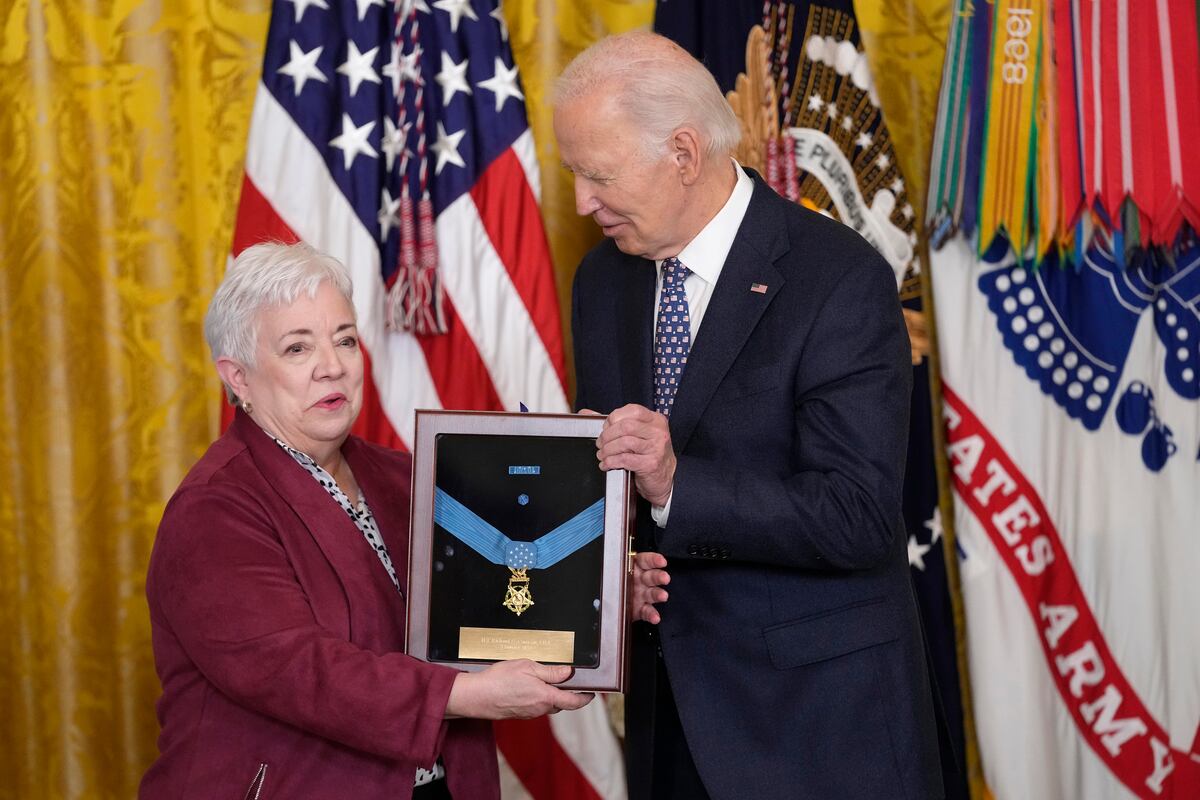How the Army’s first Hispanic 4-star distinguished himself in 2 wars

Former President Joe Biden awarded seven Medals of Honor on Jan. 3, 2025, all upgraded from previous decorations. Among six posthumous recipients was an Army officer with ample additional claims to fame: Richard Cavazos was the first Hispanic American to rise to the rank of brigadier general in the U.S. Army, and later the first such soldier to become a four-star general.
Cavazos was born on Jan. 31, 1929, to a Mexican-American family in Kingsville, Texas. His father was a cattle ranch foreman – and young Richard was a rancher for a time – but his father had higher ambitions for his children, all of whom he managed to send to college. Richard went to Texas Technological College on a football scholarship, but he broke a leg as a sophomore. He then joined the Reserve Officers’ Training Corps and graduated with a bachelor’s of science in geology.
In 1951, after the start of the Korean War, he obtained a U.S. Army commission, training at what’s now called Fort Moore, Georgia. From there, 1st Lt. Cavazos was assigned to E Company, 2nd Battalion, 65th Regiment, attached to the 3rd Infantry Division. Known as the “Borinqueneers,” the 65th Infantry was mostly made up of Puerto Rican troops, many of whom spoke only Spanish, while many of the officers spoke only English. Cavazos, however, was equally fluent in both languages, which made him an asset in itself.
Cavazos was a believer in the moral ascendency of leaders, achieved by earning the faith and trust of those he led. An early indication of that philosophy emerged during a skirmish on Feb. 25, 1953, when he was deployed in Korea.
That day, Cavazos repeatedly led his troops up front and in the open. After the opposing forces disengaged, Cavazos came upon a wounded Chinese soldier, took him prisoner and brought him through gunfire from both sides to safety — an act of compassion that offered the possibility of interrogation and information. His performance throughout the action earned him a Silver Star.
Cavazos’ leadership reached a peak on the night of June 14 and early morning of June 15, 1953, when he and Company E assaulted Hill 412, near Sagimak, Korea, to provide cover to a nearby defensive position called Outpost Harry. Three times in a matter of three intense hours, they overran the nearby Chinese positions, were driven back, regrouped and attacked again.
When finally ordered back behind friendly lines, Cavazos ordered his men back but remained on the battlefield. He found and carried five wounded soldiers behind the cover of the nearest safe hill, one by one, while also encountering disoriented troops and directing them to safety.
Only when Cavazos was sure he’d recovered all the soldiers, he sought out a medic to have his own wounds treated. On Sept. 10, 1953, he was awarded the Distinguished Service Cross for his conduct throughout that battle.
In the fall of 1953, Cavazos left Korea and was assigned to what was then called Fort Hood in Texas, where he rose to be commander of the 25th Armored Infantry Battalion of the 1st Armored Division. He was a lieutenant colonel in February 1967 when he was sent to Vietnam and took command of the 1st Battalion, 18th Regiment, 3rd Brigade, 1st Infantry Division.
There, he continued his policy of battlefield leadership, as described by William Fee, a veteran who served under him: “Most battalion commanders stood in the rear or in a helicopter above to direct the battle … he fought on the ground with us as we were facing the North Vietnamese Army.”
On Oct. 4, 1967, Cavazos’ battalion carried out an air assault as part of a search-and-destroy mission near the Cambodian border, Operation Shenandoah II. On Oct. 6, his troops ran into a well-prepared ambush by Viet Cong insurgents. Cavazos devised a counterattack that finally drove the VC from their positions. Five of his men died and four were wounded. A captured VC revealed that the action had cost their side 59 people, and 56 were wounded.
Later that month, on Oct. 30, the battalion encountered more VC near Loc Ninh. Again, Cavazos exposed himself to enemy mortar and artillery fire while devising a counterattack to drive the enemy from his ambush positions and into fortified backup entrenchments. While leading on the ground, he also directed American artillery and air strikes until the VC fled from their trenches.
As the citation for his second Distinguished Service Cross concluded, “His brilliant leadership in the face of grave danger resulted in maximum enemy casualties and the capture of many hostile weapons.”
Back in the U.S., Cavazos developed the Army’s Battle Command Training Program for senior officers. As a mentor, he inspired a new generation of such leaders, including Gen. Colin Powell, the first Black chairman of the Joint Chiefs and secretary of state.
Cavazos set an example in 1976, when he became the first Hispanic American to become a brigadier general, and in 1982, when he got his fourth star. “I told him what he meant to us poor Hispanic kids,” Maj. Gen. Alfred Valenzuela said in retrospect. “He was the guy we wanted to be.”
On June 17, 1984, Gen. Richard E. Cavazos retired after 33 years in the Army. Former President Ronald Reagan appointed him to the Chemical Warfare Review Committee in 1985. He also served on the Board of Regents at Texas Tech University, as his old alma mater had been renamed.
A Texan to the last, he died in San Antonio on Oct. 29, 2017, from complications of Alzheimer disease and was buried at Fort Sam Houston National Cemetery. In May 2023, Fort Hood was renamed from its Confederate moniker to Fort Cavazos. And finally, on Jan. 3, 2025 the Distinguished Service Cross he’d been awarded for his courage and leadership on Oct. 30, 1967, was upgraded to the Medal of Honor.

